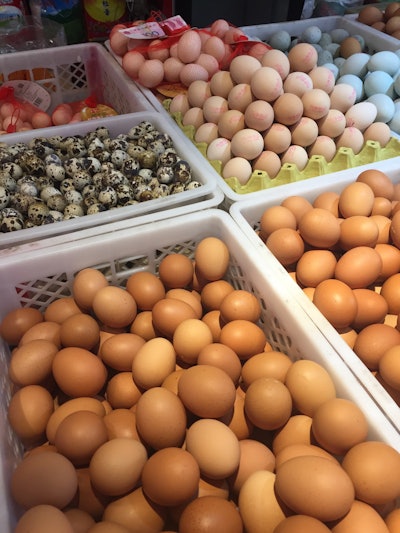
In some countries, consumers visiting their local grocery stores, have a wide choice of eggs. Not only can they buy eggs produced by hens raised in different housing systems or fed different types of diets, but they have the option of buying eggs from various bird species.
In 2020, the production of these “other eggs”, according to United Nations’ Food and Agriculture Organization (FAO) database, reached 6.3 million metric tons – the equivalent of chicken egg production from 151 countries around the world combined.
Between 2019 and 2020, the first year that COVID-19 had an impact on egg production, production of other eggs increased by 4.7% globally, which is more than double the 2.3% increase recorded for chicken egg production.
Among the 42 countries and territories that report production figures for these other eggs to the FAO, more than half of the countries are located in Asia. In fact, among the top 10 producers of other eggs, Brazil and the Russian Federation are the only non-Asian countries and ranked 5th and 9th, respectively.
As is the case for chicken eggs, China is the world’s largest producer of other eggs. With an output of 4.85 million metric tons, it accounts for 77% of global other egg production. The volume of other eggs produced by China equals the production from laying hens in Turkey, France, Spain, Argentina and Germany combined.
Diversity of offering
China’s favorite other egg is the duck egg.
Duck eggs are wrapped in clay and dipped into a curing solution to raise their internal pH. At the end of the process, which lasts from a few weeks to several months, the yolk turns a dark green color with a creamy consistency while the albumen - hard to now call it egg white - becomes a dark brown translucid jelly with a salty flavor.
While duck eggs may the favorite alternative egg in China, quail and pigeon eggs are also popular in street food markets and upscale retail stores.
Additionally, if you think this diverse egg offering is only seen in developing countries, you are mistaken.
One of the most diverse egg counters that I have seen around the world was in a London branch of the UK supermarket chain, Waitrose. It offered, on the same shelf, eggs from laying hens, ducks, geese and ostriches. Clearly, consumers are interested in more choices and other eggs offer producers more growth opportunities.

















